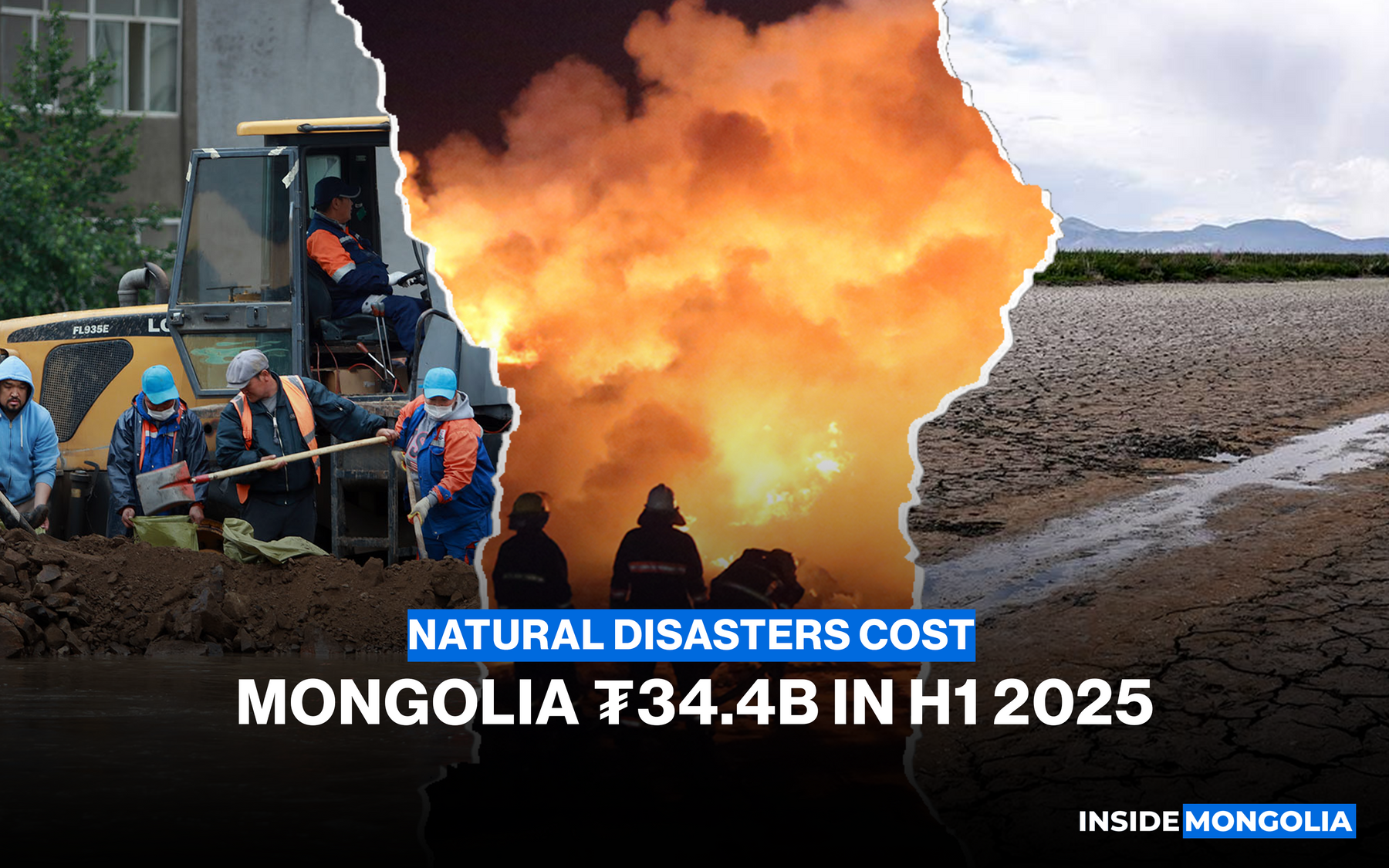Human-Caused Disasters Drain Mongolia
Khulan M.
August 25, 2025
August 25, 2025

Mongolia recorded 3,510 disasters and accidents in the first seven months of 2025, up 5.2% from last year. Fatalities fell 19.7% to 184, but economic losses surged 26.1% to ₮34.4 billion.
🤕 Human-Linked Disasters Dominate Economic Losses
Industrial and commercial fires dominated the statistics, accounting for 2,738 incidents, or roughly 78% of all cases, while natural disasters, including weather, 80 cases, geological, 44 cases, and biological, 20 cases, made up less than 4% of the total. Urban and industrial settings now account for the majority of Mongolia’s disaster-related economic losses. Rising asset values, combined with vulnerabilities in infrastructure and safety standards, have amplified the financial impact of each incident, even as emergency response improvements have reduced fatalities.
📈 Decade of Escalating Natural Disaster Costs
Over the past decade, natural disasters have continued to take a toll on the country’s economy and rural livelihoods. Annual losses now range between ₮50–₮70 billion, nearly 10–14 times higher than in the previous decade. Since 2009, disasters have claimed 11.5 million livestock, 2,789 lives, and caused ₮1.2 trillion in cumulative damage.
- 🧊 Zud = Mongolia’s Deadliest Natural Hazard: Among natural hazards, extreme winter conditions, known locally as zud, remain the most destructive, preventing herds from grazing for extended periods and threatening livestock survival. Zud is classified into white, black, blizzard, cold, and iron types, each reflecting specific meteorological patterns that exacerbate economic and social vulnerability in rural regions.
Overall… Mongolia’s disaster profile is shifting: human-linked incidents drive urban economic losses, while natural hazards continue to threaten rural livelihoods. This dual risk underscores the need for integrated disaster management, strengthened industrial safety, improved regulatory oversight, robust emergency response, and enhanced rural preparedness to safeguard both lives and the national economy.
Comment